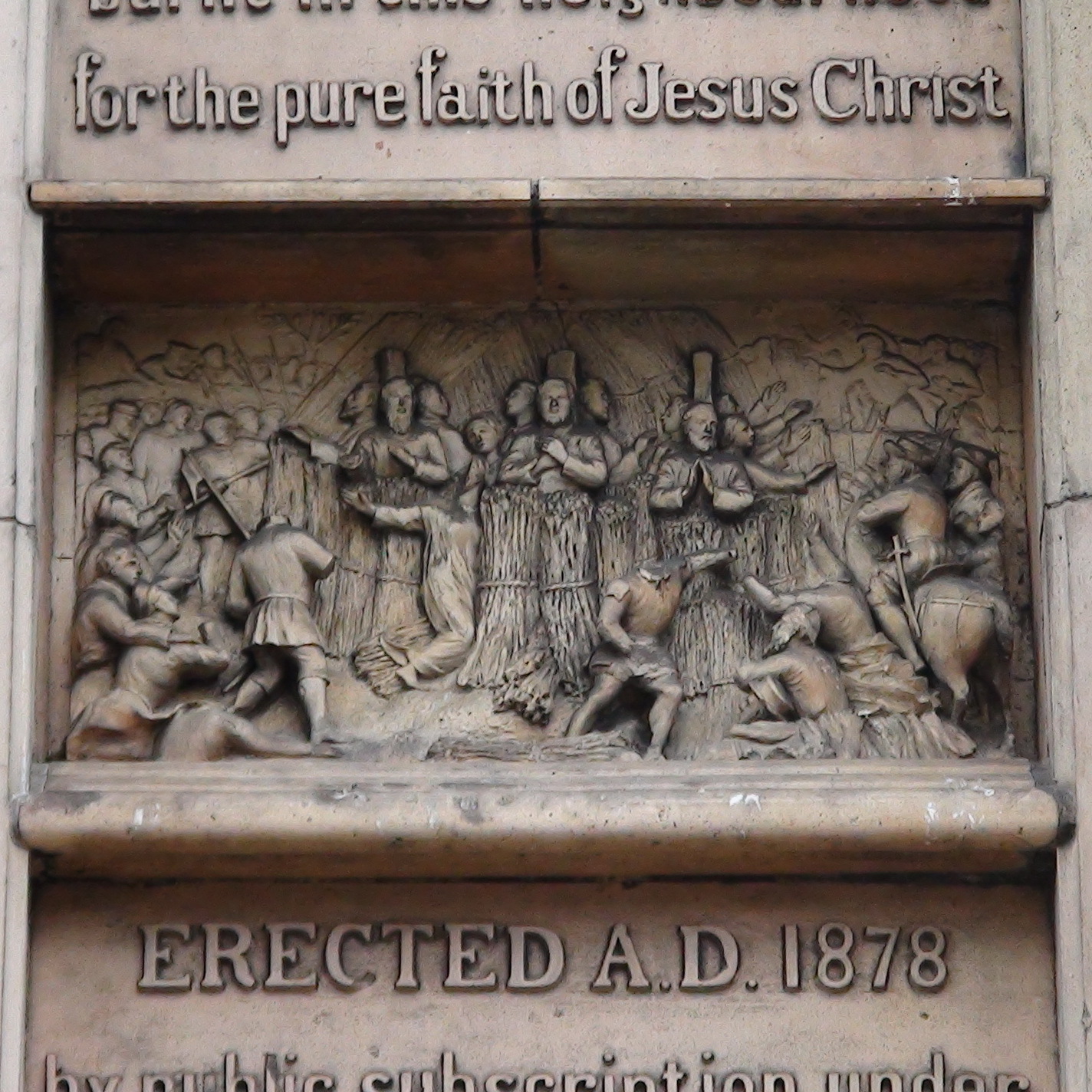Erection date: 2/9/1879
{On the side facing north-east and the church:}
To the glory of God in his suffering saints this monument is raised to perpetuate the great principles of the Reformation and to commemorate the death of 18 Protestant Martyrs burnt in this neighbourhood for the pure faith of Jesus Christ.
{carving shown in our picture}
Erected AD 1878 by public subscription under the direction of a committee.
{Followed by a list of 4 men and the company that made the memorial.}
The text continues around all six sides of this monument. Is wordily religious and, although we have transcribed it, we don't think there is any need to reproduce it here, especially since it is given here.}
The event on 27 June 1556 was a big draw: "These 11 men and 2 women were brought, pinioned, from Newgate and suffered death here in the presence of 20,000 people." A close look at the relief carving of the event reveals not only people being burnt alive, but also headless and armless people at the front of the crowd. An effect of time and weather rather than a quaint Tudor custom, we are sure.
Site: Stratford Martyrs (1 memorial)
E15, Broadway, St John’s Church
Frustratingly the location of the majority of the burnings seems to be in doubt. Of the 23 sufferers named on the monument: 1 was not martyred, only tortured; 2 were despatched in Smithfield; 1 at Ware; 1 location unknown. The remaining 18 were, according to the monument, burnt "in this place" or "at Stratford" or "at Stratford-le-Bow" or "in this town" or "here". But it seems that until the monument was erected, Stratford-le-Bow was understood to be Bow, and given the crowds (20,000) the site was thought to be at Fair Field, now Fairfield Road, Bow, just north of Bow Church Station. But the memorial erectors got the idea that Straford was the place and the rest is history (or rather not history, if you know what we mean). This information came from the church website (and you'd expect them to be keen to argue the case for the monument being correctly located) whereas the normally trustworthy BBC History run with the Stratford location, probably Stratford Green, with no doubts expressed. If you have evidence either way, please let us know.
The church was built in 1833, designed by Edward Blore.

















Comments are provided by Facebook, please ensure you are signed in here to see them